Castello di Verduno
The past
The cellars of the “Castello di Verduno” have a long story to tell… It’s the story of a wine. At the start of the XVI century, the Cerrato family starts building work on the Castle. In the 1631 Verduno passes under the jurisdiction of the House of Savoy whit the Treaty of Cherasco Later the new owner Carlo Luigi Caisotti has part of the castle rebuilt from a design by Juvarra. In 1838 King Carlo Alberto of Savoy purchases the Castle of Verduno and entrusts the management of his estate and wine cellar to the famous enologist General Carlo Staglieno. Here, following the method suggested by Giulia Falletti Colbert, the ‘Oenotechnician General’ made the first vinifications of the nebbiolo grape, laying the bases for modern Barolo. The Bianco’s family has long owned and cultivated the vine in Barbaresco, but it was by Battista Bianco at the end of 1800 the decision to start making wine from their grapes to produce wine and sell it. Franco Bianco and Gabriella Burlotto created a combination between the two most precious oenological jewels in the Langa district of Piedmont: Barolo and Barbaresco, with a marriage that has created a unique case in the history of the two wines.
The present
After 15 years spent in Eritrea, in 1950 Commendatore Giovanni Battista Burlotto returned home to Verduno and he decided to create a restaurant with accommodation facilities. After painstaking restoration work, in 1953 he welcomed the first 15 guests to the castle. The following year, the number had increased to 20 … Today, the Commendatore’s three daughters and their respective families passionately dedicate their time to the castle, now a hotel-restaurant, wine cellar and holiday farm combined into one. There are two business centers, designed for different stages of production. In Barbaresco there is the winemaking cellar where the six wines with denomination of origin are born and mature: Barbaresco, Barolo, Barbera d’Alba, Dolcetto d’Alba, Langhe Nebbiolo and Verduno Pelaverga. A Verduno there is the bottling and the wines are refined in the centuries-old cellars of the castle until the magical moment of meeting with the table. From the pomace of Nebbiolo and Pelaverga, distilled separately from the distillery of Barbaresco, born our grappa.
The philosophy
We seek to produce wine whose quality can be traced to the traditional vine-growing land of which we are a part. Today Castello di Verduno produces the most precious oenological jewels in the Langa district of Piedmont: Barolo, Barbaresco and Verduno, a rare oenological pearl produced from the grapes “Pelaverga piccolo” varietal. Convinced of its potential, they was the first to plant a whole vineyard with its grapes in 1972. The vines are attended to with loving care under Franco’s vigilant, expert eye. Every vine is followed, from pruning to harvesting. The methods we at the Castello diz Verduno use to make our wine, especially Barolo and Barbaresco, may be defined as ‘traditional’, meaning fermentation in open barrels and long ageing in large oak casks. The production process is monitored with great care and passion by our young oenologist Mario Andron who, following Franco’s precious advice, has introduced new knowhow, supplementing consolidated local techniques with small but significant innovations. Bound by shared values, Franco, Gabriella and the daughters Marcella and Giovanna, with all their collaborators, adopt a ‘hands-off’ approach, tending the fruit slowly, patiently and painstakingly.
Cascina Mucci
The farm “Cascina Mucci” based in the town of Roddino (CN) was born from a passion for wine and it is exclusively dedicated to viticulture and vinification of its own grapes.
The company is a family business: the owner Bion and his wife, Charlotte Alexander Ineichen, both born in Switzerland and moved in 2000 to Roddino, working almost without help from the outside from the plant to the processing of the vineyards to the bottling and sale of wines, almost everything is in their hands.
The accurate work in the vineyards and in the cellar is manifested in the quality of their wines.
Francesco Borgogno
The Barolo of the famous Brunate “cru” in a historic family cellar. In such a symbolic area within the territory of the Barolo production, at the very crossroad between the historical hill of Cannubi and Brunate, you will find the Borgogno Francesco company. Founded at the beginning of 1930s, this is a traditional family-run farmhouse. It produces wine exclusively from its own vineyards, located in one of the best position of La Morra represented by the “cru” of Brunate. The company makes use of its expertise in wines in order to obtain the best quality according to tradition and environmental protection. Since the very beginning of this adventure, the process has been based on few simple rules because the aim is to preserve all the traditional steps for the production of genuine wines. The love and the passion for this land and these vineyards has been handed down for three generations from father to son and today the company is run by the two sons of Francesco Borgogno: Giancarlo and Claudio and daughter-in-law Silvia, who together follow every step of the production and sale… from vineyard to bottle. Besides Barolo the company also produces wines like Dolcetto d’Alba, Barbera d’Alba and Langhe Nebbiolo. The wine is produced in the Barolo cellar with traditional pressing and fermentation with the presence of the skins in the mix for about thirty days. The whole process for the production of our Barolo Brunate is strictly traditional, with a quite long maceration followed by a long period of refinement (about two years) in oak barrels (30 or 50 hectolitres). Finally, before the sale, the wine rests in bottles for about twelve months. Instead of using barriques, the company prefers using the classic methods with big barrels. This wine can be appreciated just a few months after it has been bottled, but it gets better and better and develops its own elegance with age. The company is always available to tour its guests in the cellar to taste wines and traditional products such as cheese and cold cuts. Italian or foreign groups should book in advance.
Camping Sole Langhe
In the heart of the Langhe, surrounded by green countryside and in a panoramic and peaceful position: this is the ideal starting point for excursions along the routes of the great wines and of the legendary ctruffle. The gently rolling hills are dotted with small villages and austere castles, as well as numerous small inns where you can have a taste of the specialities of a cuisine which is famous throughout the world.
Cagliero
Passion and love for wines together with the traditions of the Langhe have always been deep-routed in the Cagliero family. In fact, the Cagliero is one of the oldest family of wine growers of the Barolo region. Historical documents dating back to the years 1500 prove it. At the beginning of the last century because of the terrible deseases of the vineyards, the family Cagliero, as well as many other wine growers, was forced to abandon their beloved but miserly estate to go and seek fortune in town. In spite of all, during that period, uncle Gian Battista with love and heart took care of the vineyards of the Cagliero family at Barolo.
Because the work in town turned out to be a success, Mario Cagliero head of the new generation, felt the necessity to return to the roots of the Langhe. He wanted to rediscover the peasant and family identity of the wine grower which had never been forgotten. This was the start of a long and difficult way which head to the reconstruction of the old estate of the Cagliero in order to enjoy again the family traditions of Barolo.
surrounded by the greenery of the vineyards and a lovely panorama, there is the agriturismo “il Ciabot”. All eight rooms (four of which have been converted out of the antique hay-barn and the others out of the old loft) are en-suite and simply decorated, with antique furniture recalling older times in line with Langhe tradition.
Cadia
Ca’ San Ponzio
The guest house “Cà San Ponzio” is situated in the midst of a calm and beautiful scenery with a wonderful view. It offers some very nice and confortable rooms with bath or shower in a traditional and familiar atmosphere. The renovation of this house was lately made with much love to details and traditionally after to regulate the area. In the morning the guests will enjoy hearty breakfasts made from local products and homemade cakes.
The guest house is situated in the middle of the famous “Langhe” nearby Barolo. It offers the best starting point for excursions to a lovely countryside. The great vines and the variety of gastronomical discoveries in this area are unique. There are even some castles to visit. There is a great diversity of walking tours throught this mythic scenery of vines and truffles.
You can then relax in the beautiful garden or at the edge of the new swimming pool and maybe, when days are getting colder, you will sit nearby the cosy fireplace and think of the daily discoveries you already made and dream of the ones you’ll do next days. You will have the possibility to taste the typical vines and local gastronomical specialities in the beautiful cave of the guest house “Cà San ponzio”.
Bussìa Soprana
Driven by a strong commitment to produce the Nebbiolo grape for Barolo wines, the Azienda Agricola Bussìa Soprana (estate) was established in 1992, on the inspiration of Silvano Casiraghi. Initially, he acquired some of the best land located in the popular site from which it takes its name. In 1995, when he was joined by Guido Rossi, another farm in the site of Mosconi was incorporated, and in 1999 the Gabutti della Bussia vineyards followed. At present, the farm covers approximately 22 hectares (all located in the municipality of Monforte d’Alba) in locations that are historically known for producing the Nebbiolo grape for Barolo wines: Colonnello, Bricot, Gabutti, Romirasco, Mosconi and Bussìa vineyards. Twenty years have been dedicated to the pursuit of excellence.
Bric Cenciurio
The company
Located in the heart of Langhe, hills of Barolo town, the company takes the name from the toponym so singular and ancient, of a part of hill located in the town of Castellinaldo “Bric Cenciurio” that it means top of Cenciurio hill. Our company was founded at the beginning of 1990 from the idea of Franco Pittatore and his brother-in-law Carlo Sacchetto. They decided to join the lands of their families, to extend the relevant surfaces with new acquisitions in Roero zone and, consequently, to make wine with the cultivated grapes. After a period of adverse vicissitudes due to the death of Franco, Carlo and his sister Fiorella, together with his children, Alessandro and Alberto, had taken the reins of the company with the collaboration of a wine expert as (enologist) Mr.Gian Franco Cordero.
The vineyards
From the beginning the company is engaged to reduce the use of synthetic chemicals substances in the vineyards, keeping alive the good agricultural practices learned from their parents and grandparents used to work with difficulty but with the conviction that the wine and grapes are “live products” in constant development with the eco-system that remains intact perfectly. The choice has been to cultivate vines of Nebbiolo, Arneis, Barbera, Dolcetto, Freisa, Brachetto, Roero, Pinot Noir, Chardonnay, Cabernet Sauvignon and Riesling.
The vineyard area company is extended for 12 hectares, distributed in three municipalities:
Barolo: on the hills facing south east of the sub-zone “Coste di Rose” and west part of the sub-area “Mon Robiolo di Bussia”, cultivated with Nebbiolo grapes with a medium average of 25/45 years. From these ones we obtain the precious grapes used for the production of our “Barolos”. Magliano Alfieri: during 1994 we have recovered with a difficult “restoring job” 3 vineyards dated back to the 40s cultivated with Barbera grape. From these vineyards we obtain “ the wine “Barbera Naunda”. Castellinaldo: during 1994 , the Cenciurio hill composed by sandy soil exposed to the East, has been implanted with the Arneis grape, princely vine of Roero. Thanks to the great adaptability to soil and microclimate conditions more various, this ground allows us to have three wines with a distinct personality.
The wine cellar
The vinification method is based on the respect of raw materials trying to interpret each vineyard individually and carefully checking the ripeness of the grapes. The technology is accompanied by traditional methods, like the lunar phases during work transfer and bottling of wines. The harvest is carried out exclusively by hands in order to select the best bunches. The grapes are fermented in stainless steel tanks at controlled temperature. For the red grape skins remain in contact with the must during maceration while white wines are produced by fermentation at low temperatures (12 – 15 °) of musts. The goal is to get the maximum expression of aromatic flavors. The first wine that marked the beginning of the commercialization had been Roero Arneis (with a classic vinification in stainless steel vats), the Berbera d’Alba “Naunda” produced by the vineyards of seventy years, fined in 18 months in oak barriques (30% new barriques) and “Birbet” local variety of aromatic sweet wine Brachetto Roero. During the year 1998, we have added a late harvest of Arneis wine produced with grapes attacked by the noble botrytis and Langhe Nebbiolo aged in not new oak barrels Milestone was the great 1999 vintage, with innovative spirit was produced Arneis “Sito dei Fossili” (Fossil site), fermented and aged on the lees in large oak casks. At the same time Bric Cenciurio started with the production of Barolo wines with two methods: the first one with a maceration medium (15 days), which matures in 600 liter in oak barrels for a period twenty-four months, the second one , with a more traditional spirit, with clusters coming from the sub-zone “Coste Rose” exclusively , with a long maceration (30-35 days) and aged in large oak barrels (2500 liters) for 24 months from.

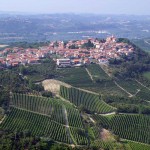
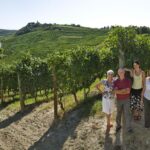
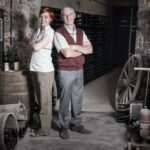
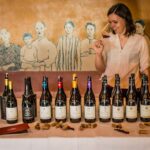
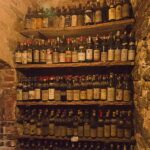
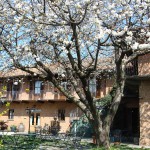
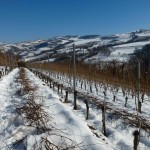
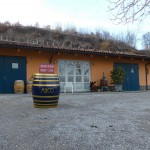
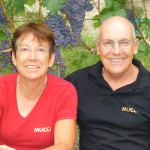
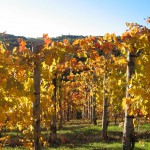
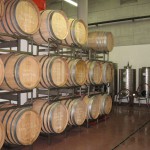
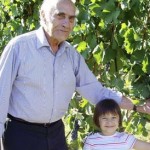
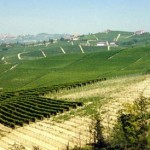
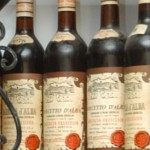
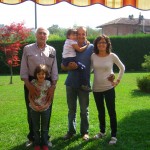
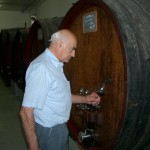
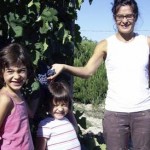
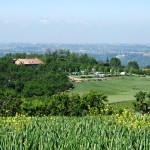
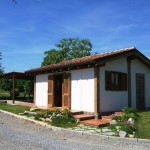
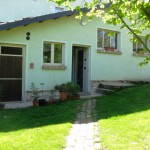
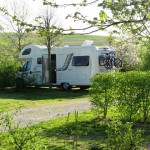
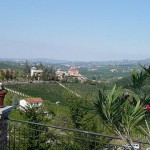
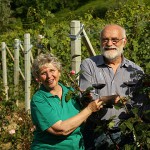
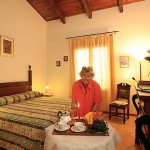
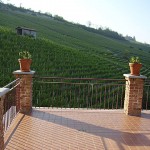
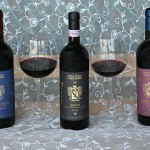
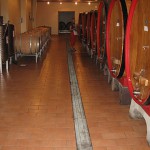
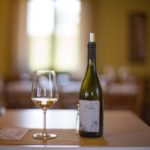
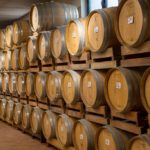
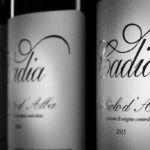
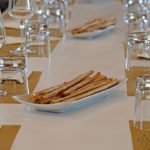
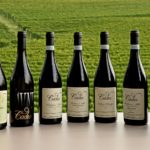
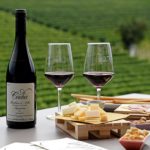
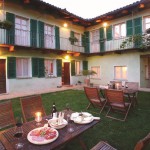
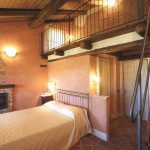
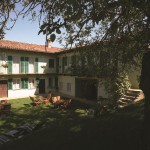
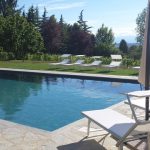
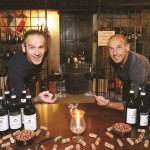
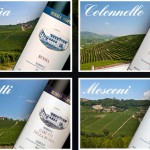
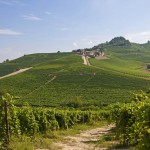
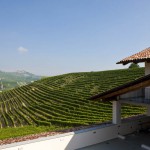
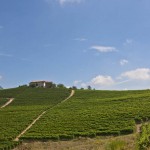
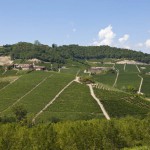
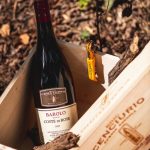

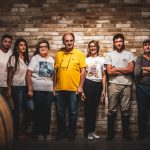

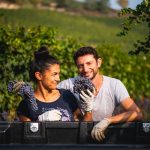
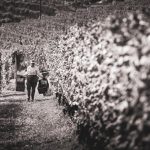





Recent Comments